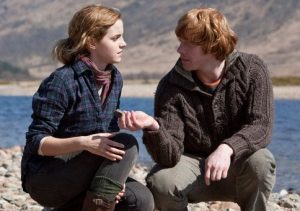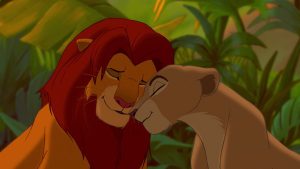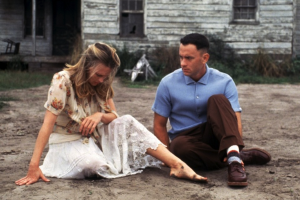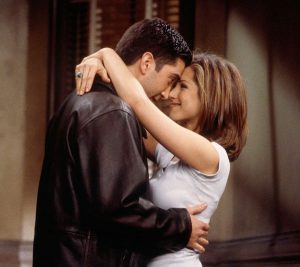by Naomi L. | May 8, 2017 | Blog, Word of the Week |
Word: eucatastrophe
Pronunciation: yoo-kə-TA-strə-fee
Part of Speech: noun
Definition: a sudden and favorable resolution of events in a story; a happy ending
Source: Oxford Dictionaries
Here’s another word I picked up from Oxford Dictionaries‘ Word of the Day entries. Every author should be familiar with terms related to the craft of writing, even the more obscure examples. Today’s featured word is one such literary term, specifically a type of conflict resolution to bring a story to a favorable conclusion. When you need a happy ending for the direst situations, sometimes the only solution is a “eucatastrophe”!
A “eucatastrophe” is a favorable and sudden resolution of events in a story, resulting in a happy ending. The word is said to have been coined by fantasy author J.R.R. Tolkien, who was known to use this device frequently in his fiction. Tolkien created this word by combining the Greek prefix eu- “good” with the noun “catastrophe” (in the sense “the denouement of a drama”), which comes from the Greek noun katastrophḗ “overturning”. This noun comprises the preposition katá “against” and the noun strophḗ “turning”.
As a literary device, the “eucatastrophe” has been subcategorized as a form of deus ex machina due to its common manifestation as a sudden resolution of an impossible problem, though Tolkien argued that this needn’t always be the case. A notable difference between these two devices is that the former stems entirely from an optimistic view of history and the world, that is, the idea that any course of events will naturally lean toward a positive outcome. Given its implausible nature, the “eucatastrophe” is probably most useful to fantasy and science fiction writers who favor happy endings. If your plots often call for a strong twist to save your characters from almost certain doom, you can definitely find good use for a “eucatastrophe” in your stories!
What are your thoughts on this word? Any suggestions for future “Word of the Week” featured words?
by Naomi L. | May 5, 2017 | J.C. Wolfe's Writing, Poetry |
To love someone intensely is to feel
Complete beside the person you adore.
When life gives you a love so pure and real,
You live each day to feel it more and more.
To love someone with all your heart and soul
Is finding one with whom to share your life,
So when your trials start to take their toll,
You’ll find peace with your husband or your wife.
To love someone forever is to know
The joy of having someone on your side.
No matter what you do or where you go,
You’ll always be together for the ride.
All that I’ve learned of love, you two taught me.
I love you! Happy Anniversary!
by Naomi L. | May 3, 2017 | Blog, Creative Writing |
This week marks a special occasion for two of the most important people in my life, the couple who taught me everything I know about love, especially the value of romance born from friendship. Thinking about their love has inspired me to write about the different levels of “friends first” romance and my favorite fictional couples who started as friends. There are many types of romance I admire, but love based on friendship is by far my favorite!
So to celebrate the occasion, here is a list of five types of romance based on friendship, with my favorite examples of fictional couples for each. Enjoy!
1) Coming-of-Age Romance – Hermione Granger and Ron Weasley (Harry Potter)
 Being an avid fan of the Harry Potter books, Hermione and Ron are one of my favorite examples of a Childhood Friend Romance couple. Though they don’t like each other very much when they first meet, they quickly become close friends as the series progresses, and even more than that by the time they reach young adulthood. Through all their arguments and disagreements, Ron and Hermione clearly harbor some complicated romantic feelings for each other in the second half of the saga, so when they finally get together in the last book, it’s nothing short of epic. A magical love story indeed!
Being an avid fan of the Harry Potter books, Hermione and Ron are one of my favorite examples of a Childhood Friend Romance couple. Though they don’t like each other very much when they first meet, they quickly become close friends as the series progresses, and even more than that by the time they reach young adulthood. Through all their arguments and disagreements, Ron and Hermione clearly harbor some complicated romantic feelings for each other in the second half of the saga, so when they finally get together in the last book, it’s nothing short of epic. A magical love story indeed!
2) Reunited Childhood Friends – Simba and Nala (The Lion King)
 If you grew up with Disney movies like I did, you no doubt have fond memories of watching (and probably singing along to) The Lion King. Though the central theme of the story is Simba’s coming of age, his romance with Nala deserves special mention as a classic example of how best friends can turn out to be soulmates as well. After being separated as children, these two lions are reunited in adulthood by chance and, in true Disney fashion, quickly fall in love by rekindling the affection they’ve always had for one another. Nala does whatever she can to push Simba in the right direction, while Simba is ready to defend Nala and the rest of their pride after gaining the sense to return home. From their adventures as cubs to the final battle for Pride Rock, these best friends prove they’ll always have each other’s back, so after they reclaim their home at the end of the story, you know the Pride Lands will be ruled by the best king and queen ever!
If you grew up with Disney movies like I did, you no doubt have fond memories of watching (and probably singing along to) The Lion King. Though the central theme of the story is Simba’s coming of age, his romance with Nala deserves special mention as a classic example of how best friends can turn out to be soulmates as well. After being separated as children, these two lions are reunited in adulthood by chance and, in true Disney fashion, quickly fall in love by rekindling the affection they’ve always had for one another. Nala does whatever she can to push Simba in the right direction, while Simba is ready to defend Nala and the rest of their pride after gaining the sense to return home. From their adventures as cubs to the final battle for Pride Rock, these best friends prove they’ll always have each other’s back, so after they reclaim their home at the end of the story, you know the Pride Lands will be ruled by the best king and queen ever!
3) Lifelong Love – Carl and Ellie Fredricksen (Up)
 On the other hand, sometimes childhood friends end up staying together their whole lives, and the best of these friendships turn into a romance for the ages. Such is the case of Carl and Ellie Fredricksen from Pixar’s 2009 film Up, who’s four-minute montage of their marriage tells one of the greatest love stories ever seen in a Disney movie. From exploring old abandoned houses as children to sharing a loving home into old age, these two adventurers at heart were clearly meant to be together for life. Seriously, just try to watch the beginning of this film without tearing up! Sweetest romance ever!
On the other hand, sometimes childhood friends end up staying together their whole lives, and the best of these friendships turn into a romance for the ages. Such is the case of Carl and Ellie Fredricksen from Pixar’s 2009 film Up, who’s four-minute montage of their marriage tells one of the greatest love stories ever seen in a Disney movie. From exploring old abandoned houses as children to sharing a loving home into old age, these two adventurers at heart were clearly meant to be together for life. Seriously, just try to watch the beginning of this film without tearing up! Sweetest romance ever!
4) Crossing Paths – Forrest Gump and Jenny Curran (Forrest Gump)
 The childhood friends of the famous 1994 film, Forrest Gump and Jenny Curran are a classic example of a pair of soulmates whom fate continuously throws into and out of each other’s lives. After growing up together in 1950s Alabama, they end up going their separate ways after college, from which point Forrest’s story mentions several reunions between them up to the present day. Despite living so far apart from her for much of his life, it’s made abundantly clear by the end of the story that Forrest never stopped loving Jenny since they were kids, and that deep down she always knew he was the right man for her. It may not be the happiest of romances, but Forrest and Jenny had a beautiful love story nonetheless!
The childhood friends of the famous 1994 film, Forrest Gump and Jenny Curran are a classic example of a pair of soulmates whom fate continuously throws into and out of each other’s lives. After growing up together in 1950s Alabama, they end up going their separate ways after college, from which point Forrest’s story mentions several reunions between them up to the present day. Despite living so far apart from her for much of his life, it’s made abundantly clear by the end of the story that Forrest never stopped loving Jenny since they were kids, and that deep down she always knew he was the right man for her. It may not be the happiest of romances, but Forrest and Jenny had a beautiful love story nonetheless!
5) On Again, Off Again – Ross Geller and Rachel Green (Friends)
 Every fan of Friends remembers the on-again-off-again rollercoaster that was Ross and Rachel’s relationship. Having grown up on the same street, these two friends have known each other since childhood, though at the time they were really friends by extension through Monica. After their reunion as adults in the first season, it becomes apparent that the crush Ross developed on Rachel in high school never burned out, which leads to ten years of one of the most complicated friendships ever. Although they suffered many breakups and makeups throughout the series (“We were on a break!”), Ross and Rachel’s unwavering love would inevitably lead them back to each other in the end, solidifying their status as one of television’s favorite couples. Best friends for life!
Every fan of Friends remembers the on-again-off-again rollercoaster that was Ross and Rachel’s relationship. Having grown up on the same street, these two friends have known each other since childhood, though at the time they were really friends by extension through Monica. After their reunion as adults in the first season, it becomes apparent that the crush Ross developed on Rachel in high school never burned out, which leads to ten years of one of the most complicated friendships ever. Although they suffered many breakups and makeups throughout the series (“We were on a break!”), Ross and Rachel’s unwavering love would inevitably lead them back to each other in the end, solidifying their status as one of television’s favorite couples. Best friends for life!
Who are your favorite “friends first” couples? What other examples of “friends first” romance would you add to this list?
Dedicated to my parents, the happiest couple I know. Thank you for teaching me everything I know about true love! Happy Anniversary, Mom and Dad! I love you!
by Naomi L. | May 1, 2017 | Blog, Word of the Week |
Word: insidious
Pronunciation: in-SI-dee-əs
Part of Speech: adjective
Definition: proceeding in a gradual, subtle way, but with harmful effects
Source: Oxford Dictionaries
Bird Chorus: He’s a nasty bird!
Nigel: I’m insidious.
Bird Chorus: He’s ghastly!
Nigel: Oh, I’m hideous!
Bird Chorus: He was a real macaw!
Nigel: I’m a cockatoo!
Bird Chorus: An obscene bird!
Nigel: Yes, that bit’s true.
– “Pretty Bird“, Rio (2011)
Okay, maybe I’ve had a couple of Jemaine Clement songs stuck in my head recently (thanks, Moana), so I felt like sharing a vocabulary word from one of them. The above excerpt is from the full version of “Pretty Bird” from the 2011 film Rio, a song Nigel sings to reveal his backstory to Blu and Jewel and establish his status as the villain. This example may not show today’s featured word in its primary sense, but it’s still easy to understand in context; Nigel is indeed an “insidious” cockatoo!
To be “insidious” is to proceed in a subtle and gradual way with harmful effects. The word arose in the mid 16th century and comes from the Latin adjective insidiosus, meaning “cunning”. This adjective stems from the noun insidiae “ambush”, which derives from the verb insidere “to lie in wait”. This verb comprises two roots: the preposition in “in” and the verb sedere “to sit”.
Aside from its main definition, “insidious” can also be used as a synonym for “treacherous” or “crafty”. This is arguably its most common use in modern speech, though its primary meaning can be just as useful in more formal contexts (such as an “insidious” disease). Either way, you can be sure this adjective always has a negative connotation. If you write characters with a crafty nature or actions that cause harm over time, you may find a place for the word “insidious” in your stories!
What are your thoughts on this word? Any suggestions for future “Word of the Week” featured words?

 Being an avid fan of the
Being an avid fan of the  If you grew up with Disney movies like I did, you no doubt have fond memories of watching (and probably singing along to)
If you grew up with Disney movies like I did, you no doubt have fond memories of watching (and probably singing along to)  On the other hand, sometimes childhood friends end up staying together their whole lives, and the best of these friendships turn into a romance for the ages. Such is the case of Carl and Ellie Fredricksen from Pixar’s 2009 film
On the other hand, sometimes childhood friends end up staying together their whole lives, and the best of these friendships turn into a romance for the ages. Such is the case of Carl and Ellie Fredricksen from Pixar’s 2009 film  The childhood friends of the
The childhood friends of the  Every fan of
Every fan of 
Recent Comments